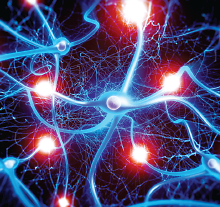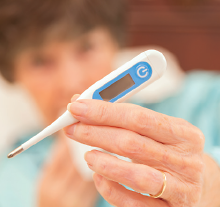Combination Pharmacotherapy for Psychotic Depression Improves Medication Adherence
Patients with psychotic depression who take a combination of antidepressants and second-generation antipsychotics may be more likely to continue taking their medications compared with those on antidepressant monotherapy, according to an analysis published in the Journal of Managed Care & Specialty Pharmacy.
Researchers at the University of Texas at Austin assessed medication adherence and persistence (the number of days before treatment discontinuation) among two groups of Texas Medicaid patients who were diagnosed with severe major depressive disorder with psychotic features. The analysis included 510 patients using antidepressant monotherapy and 416 patients using the combined antidepressant-antipsychotic therapy.
They next measured adherence using two measures: the proportion of days over 12 months in which the patient was “covered” by prescription claims for their medications (proportion of days covered, or PDC) and the number of days that medication was supplied to the patient over the year (medication possession ratio, or MPR). For both measures a ratio of 80 percent or better was considered adherent, and in both cases the authors found that adherence was higher among patients taking both antidepressant and antipsychotic medication compared with antidepressant medication alone (38.7 percent versus 28.4 percent, respectively for PDC and 43.5 percent versus 34.1 percent for MPR).
Antidepressant persistence was also longer for dual-therapy patients, with an average of 172 days before discontinuation compared with 130 days for antidepressant monotherapy.
The authors noted these findings provide evidence that supports current recommendations for treating psychotic depression, though they acknowledged that the results reflect only prescription claims and not usage and that the Medicaid-based sample may not be generalizable to the broader population.
Medication Adherence and Persistence in Patients With Severe Major Depressive Disorder With Psychotic Features: Antidepressant and Second-Generation Antipsychotic Therapy Versus Antidepressant Monotherapy. Kim-Romo D, Rascati K, Richards K, et al.
J Manag Care Spec Pharm. May 2016; 22(5):588-96.
GABA-A Receptor May Initiate Synaptic Pruning
Synaptic pruning—a process during which unnecessary connections between neurons are removed—is believed to be important for optimal learning. However, the process that triggers synaptic pruning is not known.
Now, a study published in eLife has identified the α4βδ GABA-A receptor as the potential initiator of the synaptic pruning process.
Researchers from SUNY Downstate Medical Center and Tianjin Medical University in China found that mice lacking this receptor did not show a decrease in the density of their synaptic connections in the hippocampus following the onset of puberty, while synapses in normal mice decreased by 50 percent over the same period.
The researchers also found that the synaptic loss was accompanied by decreased expression of kalirin-7, a protein that controls the remodeling of the cellular scaffolding; this suggests a physical mechanism by which the connections can be pulled back.
When the mice with deletions of α4βδ GABA-A receptor performed some learning tasks, the authors found that while they could initially learn a spatial location (e.g., learn to avoid an area associated with a mild foot shock) at the same rate as normal mice, they were far less adept at re-learning that location if some changes were made.
“These findings may suggest new treatments for ‘normalizing’ synaptic pruning in conditions where this process occurs abnormally, such as autism and schizophrenia,” the study authors wrote. “Future studies will test how these additional factors alter synaptic pruning in adolescence and will test drugs that target these inhibitory receptors to manipulate adolescent pruning.”
Afroz S, Parato J, Shen H, Smith S. Synaptic Pruning in the Female Hippocampus Is Triggered at Puberty by Extrasynaptic GABAA Receptors on Dendritic Spines.
Elife. May 2, 2016 [Epub ahead of print]
Long-Term Use of Lurasidone Benefits Patients With Schizophernia
Long-term treatment with the antipsychotic lurasidone is associated with sustained symptom improvements in patients with schizophrenia with minimal effects on weight, glucose, and lipid profiles, according to a study published in CNS Spectrums.
A total of 251 people with schizophrenia who had participated in a six-week placebo-controlled trial continued in a 22-month open-label study, during which they received one flexible dose of lurasidone (40 mg to 120 mg) daily.
Of the 251 patients who entered the open-label trial, 26.7 percent completed all 22 months of this trial, and those who completed the full extension had an average reduction in their Positive and Negative Syndrome Scale (PANSS) total score of 27 points (from 96.5 to 69.5). The patients also had a 9 mg/dl reduction in total cholesterol, only a 0.1 percent increase in their glucose levels (measured by HbA1c), and they gained only an average of 0.8 kg.
About 15 percent of the patients discontinued the open-label trial specifically due to an adverse event; relapse of schizophrenia symptoms (12.4 percent), akathisia (10.8 percent), and somnolence (10.8 percent) were the most commonly reported adverse events.
Correll C, Cucchiaro J, Silva R, et al. Long-Term Safety and Effectiveness of Lurasidone in Schizophrenia: A 22-month, Open-Label Extension Study.
CNS Spectr. Apr 6, 2016. [Epub ahead of print]
Raising Body Temperature May Decrease Symptoms of Alzheimer’s
The reduction in core body temperature associated with aging may exacerbate some of the manifestations of Alzheimer’s disease, according to an animal study reported in Neurobiology of Aging.
Researchers at Universitȳ Laval in Quebec compared the body temperature of 3x-Tg mice—mice genetically modified to express symptoms of Alzheimer’s—with age-matched controls. By the time the mice reached 12 months, the body temperature of the 3x-Tg mice was 1 degree Celsius lower than the age-matched controls.
If these mice were exposed to a prolonged cold environment (24 hours at 4 degrees Celsius), it aggravated key pathological markers of the disease such as over-phosphorylated tau proteins and higher levels of soluble amyloid beta fragment. Conversely, if the mice were exposed to a warmer environment (28 degrees Celsius) for several days, these pathological markers decreased and the memory function of the animals improved.
“Our findings suggest that it is worth exploring the treatment of thermoregulation among seniors suffering from Alzheimer’s,” author Frȳdȳric Calon, Ph.D., said in a press statement. “If our conclusions are confirmed, it would be a relatively easy therapeutic option to implement because body temperature can be increased through physical activity, diet, drugs, or simply by increasing the ambient temperature.” ■
Vandal M, Phillip W, Tournissac M, et al. Impaired Thermoregulation and Beneficial Effects of Thermoneutrality in the 3xTg-AD Model of Alzheimer’s Disease.
Neurobiol Aging. March 29, 2016. [Epub Ahead of print]




